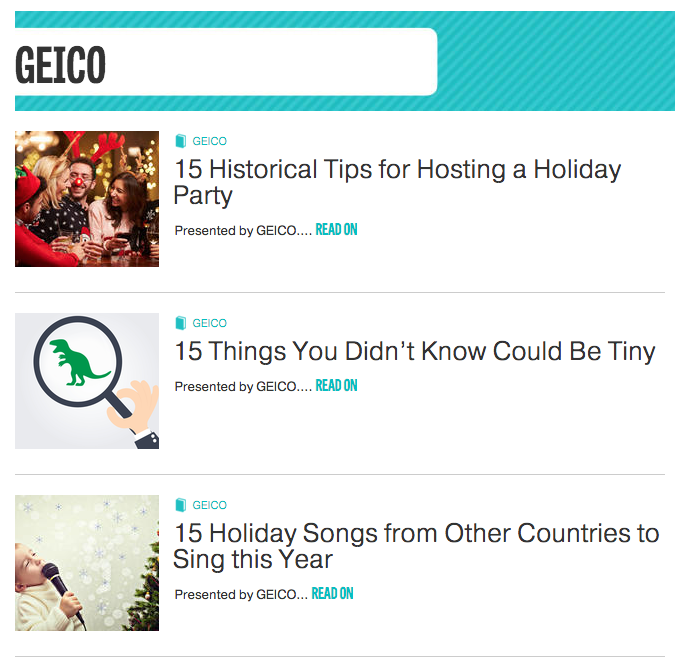Slate, New York Magazine, Mental Floss, Popular Science, and many other publishing powerhouses gathered in New York recently for Min’s Social Media Bootcamp. The conference was well put together – a half day of experts in their fields providing key takeaways from their own social media strategies. We’ve synthesized their advice even further into these quick tips below. Read on to see how these publishers are mastering the social media world (and click the headlines for links to the presentations themselves.)
From Slate:
- Victoria Fine, director of strategy and audience development, conducted one of the best presentations, and set the stage for the rest of the day. She categorized the two types of audiences you should be concerned about: Onsite Audience versus Distributed Audience. Meaning, you want people to come to your home page or site – the onsite audience – but you also want to make sure you’re on the platforms where people are – i.e., the distributed audience. Buzzfeed is an example of a publisher who has mastered this concept, mostly because the content IS the revenue (Buzzfeed spent $5 million on Facebook ads in 2015 FYI).
- Instagram has been a challenge for some brands, because of the inability to link to more information in a post. Every marketer has to have their CTA, after all. But this may soon be changing, – and already has for advertisers on the platform – so it should at least be on your radar.
- Social is good for SEO. Victoria talked specifically about Pinterest, Twitter, and YouTube. On Pinterest, the majority of Pinterest pins come from people who are searching for something specific, and then pin that image or URL to the social platform. While on Twitter, tweets are indexed by Google.
- Should you ignore Google Plus? Not necessarily. B2B and tech companies do G+ well, but there may be better ways to spend your time, and other SEO tactics that will work. As one panelist put it: “We’re just there.” Another pro-tip from the Travel & Leisure team, who was a part of the second half of this presentation: for platforms you’re not on, you should still be monitoring them. Spend 15 minutes a day (okay, a week) analyzing the platform’s key takeaways.
Speaking of Travel & Leisure:
- This team has an audience engagement editor on staff. What does that involve? Tracking social trends, writing stories, engaging with social followers, reaching out to influencers (to encourage link sharing), and a daily meeting with the digital team to discuss what’s happening in social. They also pull data at the end of every day “to see what stories are picking up velocity”.
- An interesting point they raised about the success of print: If print brings in the most money for you, why would you spend any time on social? “We want to turn our social followers into travelers,” they responded. Again speaking to the point that social media has more layers than ever: It’s everything from a traffic driver, to a brand builder.
A few DOs and DONTs from the team:
- DON’T jump in without ‘meeting’ your followers. DON’T forget to collaborate on sponsored posts. DO use tools to help find trending topics. DO create social partnerships. DON’T jump on trending topics just because. DO create a brand hashtag on Instagram. DO ask interviewees to share the story. DON’T forget to track your successes, and set milestones.
Now, there were a lot of great tips at this conference, but also a few that we disagreed with. For example, we heard “you can’t oversaturate your twitter feed”. Discussing this statement at our table, a number of us shared how we have all unfollowed accounts because they were tweeting too much. Yes, we understand that ‘oversaturation’ is not a thing for a pro twitter user who’s following thousands – if not tens of thousands – of people. But this is a prime example of how you should always think about advice in context of your exact brand or field. If you’re supposed to be reaching unique audiences – like chemists who may be more particular with whom they follow, or use twitter as a curated news feed – your tweets could appear one after the other, after the other, after the other. Queue the unfollow.
From Refinery29:
(A little context to their audience: They have 25 million unique visitors; as they say, “reaching 1 out of 4 millennial women in the US”.)
- Social media can be a good solution for ad blocking software, because “You can’t block great content”.
- Invest in a digital narrative. What does that mean for Refinery29? They have an impressive 25,000 original photos to use on their sites and for social promotions.
- Customize your content to each platform. On Facebook, this means uploading your video to Facebook directly so it plays in the platform itself. On Twitter, this means using images with quote overlays to encourage retweets. On Instagram, it’s a custom GIF.
- Be wary of audience fatigue. (Which speaks to our previous point about trying not to oversaturate your accounts.)
- Reserve a percentage of your posts for experimental content.
From Mental Floss:
- All their growth comes from social engagement. Their mantra? “We create smart content”.
- Most of their presentation talked about native advertising. Their model was not to build a custom content studio: Their editorial team writes for both their own site, and develops the custom content with advertisers. Why is this important? They don’t want to create a “B team” for their advertisers. No matter who is backing content, it should always be top-notch for the reader. This also means they have no separate social stream, but also no shilling: sponsored content is clearly marked, includes a CTA, and again, always has the reader in mind.

- Also interesting, they’ll host what they call ‘themed editorial days’ with advertisers. The example they gave was a series of posts created for GEICO. On the 15th of every month, GEICO sponsored listicles centered around the number ’15’. (In conjunction with GEICO’s famous “’15 minutes could save you 15%’ tag line.) But even here, Mental Floss is still not talking about car insurance.
- All this being said, Mental Floss conceded there are publishers where the more traditional church and state division should still exist – for instance, in tech reviews or news outlets. But for Mental Floss, they say they’re not in the business of providing criticism or breaking news, so it’s not as necessary.
From Popular Science:
- They shared that 6 out of 10 of their top Facebook and Twitter posts, of all time, came from trending topics in the last two months. (We’ve seen a similar trend ourselves here at C&EN.) This does not mean Popular Science was talking about the Kardashians. These trending topics were very related to their audience: such as the super blood moon, or water on mars. Be a part of the conversation your audience cares about the most.
- Another interesting take away from the Popular Science crowd: “Our audience likes video and space first thing in the morning.”
- For fun, be sure to read their list of the “11 Most Important Cats in Science”
What is your social strategy? Has anything taken you by surprise as you’ve defined it across channels? Tell us in the comments.


















